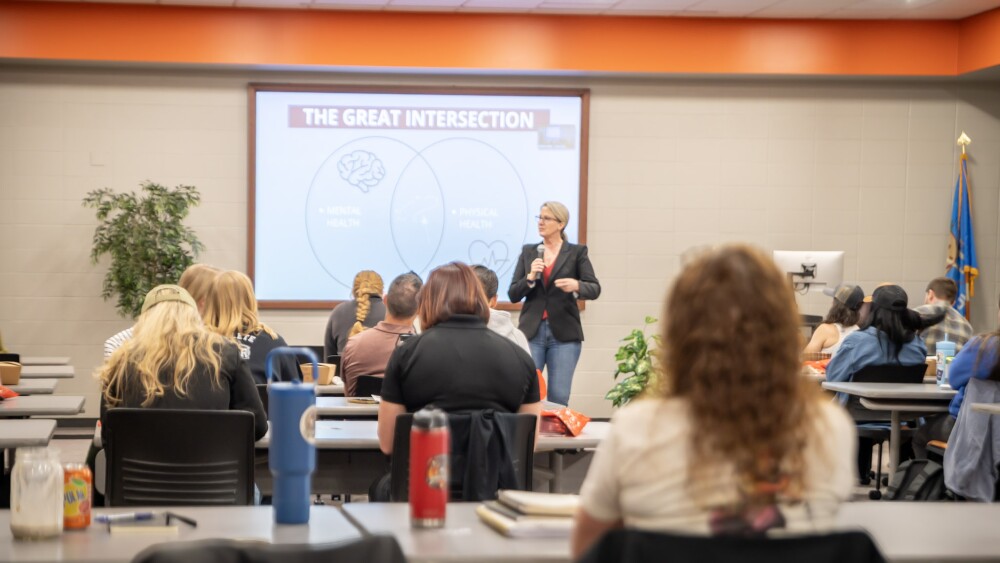Women in public safety have long had to adapt to their environment, accept the gear provided, (even if it doesn’t fit well) and often work twice as hard to prove themselves. In traditionally male-dominated roles, any research focused on women tends to be minimal. And more specifically, tactical research and resources geared toward women have been practically non-existent. As a small minority of those in tactical professions, women’s unique needs have been overlooked for too long — until now.
Tactical focus
On May 9, Oklahoma State University hosted a one-day tactical human performance event focused on the needs of women in fire, police and the military. The summit took place at OSU’s Oklahoma City campus and included approximately 100 women and men at the in-person event as well as 60 who participated virtually. Participants represented 18 states across the country, from Washington to Florida.
The goal of the summit was to provide resources for women and those who work with them to improve both physical and mental health and performance. As such, presenters covered a range of topics, from sleep hygiene to leveraging female physiology for maximum performance.
Annette Zapp, who served a dual role as co-event organizer and presenter, said the Women’s Tactical Summit was inspired by a simple, yet problematic, reality: “Historically women have been left out of research, especially in tactical research. I think it’s really important for women to get the information that’s out there to help them perform better.”
Zapp — a retired career firefighter from Illinois and current doctoral student in Health and Human Performance at OSU — has seen firsthand the lack of attention to women-specific issues over the years: “As of six months prior to retirement, one station still didn’t have a bathroom facility for female firefighters,” she noted. And when she tried to approach the union president about developing a maternity policy for the department early in her career, she said he “laughed in my face.”
Zapp and co-organizer Captain Meredith Herman of the Oklahoma City Fire Department structured the event to meet the needs of women in first responder roles as well as those who coach and train them. The format included formal presentations, question/answer time, and a panel discussion at the end of the day. Participants had the opportunity for networking and informal discussions during breaks and lunch, both in-person and virtually.
Zapp was particularly pleased with the scope and depth of the presentations by the various speakers: “I think we covered the spectrum of human performance as entirely as we possibly could.” All of the presentations were based on cited research studies.
Topics covered:
- Making the Healthy Choice the Easier Choice
- Reproductive Health, Belonging, and Female Performance
- The Hydration Solution
- Leveraging Female Physiology for Optimal Performance and Recovery
- Stop, Collaborate, and Listen: Cognitive Control for our Tactical Women
- The Ground Truth about Sex Differences and Sleep
- Opportunities Outweigh Differences
The research presented by the various speakers was relevant to all firefighters, but specific impacts on women were highlighted. For example, research has shown that firefighting may have negative impacts on reproductive health for both men and women, but women are statistically more vulnerable. A recent study has shown that female firefighters have 2.3 times the risk of miscarriage compared to the general public. This may be influenced by the fact that many women do not routinely report pregnancies until nearly the second trimester, possibly because of inadequate maternity policies within their organizations.
The presentation about proper hydration was an eye-opener for any first responder. Studies show that most firefighters are somewhat dehydrated most of the time, and only around 10% of all firefighters were properly hydrated prior to active training. Hydration diminishes rapidly during actual deployment. Women are differently affected by dehydration due to hormone and electrolyte balances and the increased risk for them of urinary tract infections secondary to dehydration. The impact of dehydration is significant: fatigue, brain fog and poor decision-making, muscle cramps and headaches, and an increased risk of injury.
Specific tips from one presenter about nutrition and fitness applied equally to women and men. Clear ways to create a culture of health within the organization included providing exercise opportunities and support, choosing healthier foods both on and off the job, and developing a master plan to make healthy choices the easier and more desirable ones.
Looking ahead
Zapp is already excited about planning the next event in 2026, which she hopes will include continued emphasis on the topics presented this year as well as more focus on mental health and reproductive issues. In addition, she commented, “I’d like to include some programming. How do I organize my life so I can have time to program in the physical training that I need to do my job well and be healthy?” She stressed that topics related to tactical performance apply not only to recruitment of women in emergency services but also to retention of those hired.
And as Zapp noted in her opening remarks at this year’s event, focusing on both awareness and advocacy is critical when it comes to addressing issues that affect women in tactical roles. Because women are still a distinct minority in these roles — only around 5% of all career firefighters — their needs are often overlooked. The summit gave them a voice, and as Zapp commented, “Women need to get loud and ask for what they need, or they will continue to get the status quo.”







